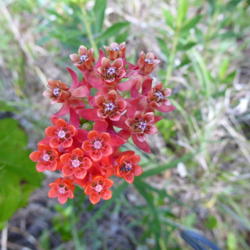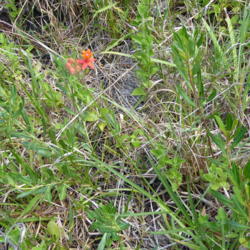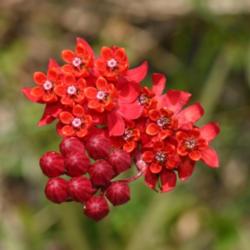| Plant Habit: | Herb/Forb |
| Life cycle: | Perennial |
| Sun Requirements: | Full Sun Full Sun to Partial Shade Partial or Dappled Shade |
| Water Preferences: | Mesic Dry Mesic Dry |
| Minimum cold hardiness: | Zone 5b -26.1 °C (-15 °F) to -23.3 °C (-10 °F) |
| Maximum recommended zone: | Zone 11 |
| Plant Height: | 36 - 60 inches |
| Plant Spread: | 12 - 18 inches |
| Flowers: | Showy |
| Flower Color: | Orange Red |
| Bloom Size: | Under 1" |
| Flower Time: | Late spring or early summer Summer Late summer or early fall |
| Underground structures: | Taproot |
| Suitable Locations: | Bog gardening |
| Uses: | Groundcover Will Naturalize |
| Wildlife Attractant: | Bees Butterflies |
| Toxicity: | Leaves are poisonous Roots are poisonous |
| Propagation: Seeds: | Self fertile Stratify seeds: 2 - 3 weeks Sow in situ Start indoors Can handle transplanting |
| Propagation: Other methods: | Other: Basal cuttings late spring. Cuttings 10 cm. with as much white underground stem as possible. Keep in shade |
| Pollinators: | Moths and Butterflies Bees Various insects |
| Containers: | Suitable in 3 gallon or larger |





« Add a new plant to the database
» Search the Milkweeds Database: by characteristics or by cultivar name
« See the general plant entry for Milkweeds (Asclepias)